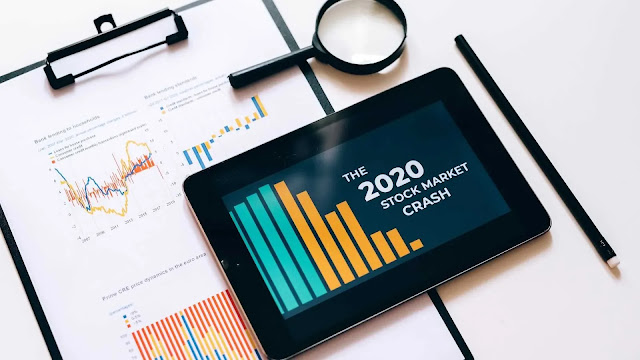The Power of Data Analytics in Business
In today's business world, data has become super important. It's like a big revolution, changing the way companies work. This article is all about understanding this data revolution and why data analytics is so crucial.
Data analytics is like a powerful tool. It helps businesses make better decisions. Imagine it's like having a map when you're lost – it shows you the way. That's what data analytics does for businesses. It shows them the path to success.
 |
| The Power of Data Analytics in Business |
In this article, we're going to explore what data analytics is all about. We'll see how it helps in making smart choices. Think of it as a guide to understand the world of data in business.
So, the main aim of this article is to show you why data analytics is a big deal in business. We'll discuss its importance and how it's changing the way companies operate. So, let's dive into this data-driven journey and see why it matters so much.
Understanding Data Analytics
Data analytics is like a magical magnifying glass for businesses. It helps them zoom in on their data to uncover hidden treasures of information. Let's take a closer look at what data analytics is and the different types it comes in.
 |
| Understanding Data Analytics |
A. What is Data Analytics?
At its core, data analytics is like a detective for data. It takes a bunch of information (data) and investigates it to find valuable insights. Think of it as a detective solving a mystery. Data analytics helps businesses solve the mystery of their data, revealing patterns, trends, and answers to important questions.
B. Types of Data Analytics
Data analytics comes in various flavors, each serving a unique purpose:
1. Descriptive Analytics
Descriptive analytics is like a historian. It looks at past data to summarize what has happened. It's great for telling you what happened and when. For example, it can tell a store owner how many customers visited their shop last month.
2. Diagnostic Analytics
Diagnostic analytics is like a doctor. It not only tells you what happened but also why it happened. It's like finding out the root causes of a problem. If a website's traffic dropped, diagnostic analytics can pinpoint if it was due to a technical issue or a change in user behavior.
3. Predictive Analytics
Predictive analytics is like a fortune teller. It uses historical data to make predictions about the future. For instance, it can forecast which products will sell the most next month based on past sales trends. It's a bit like looking into a crystal ball, but with data.
4. Prescriptive Analytics
Prescriptive analytics is like a coach. It not only predicts what will happen but also suggests the best actions to take. For a delivery company, it can recommend the most efficient routes for drivers to save time and fuel.
In summary, data analytics is all about digging deep into data to find valuable information. It has different types, each with its own role. Descriptive tells you what happened, diagnostic explains why, predictive forecasts the future, and prescriptive advises on the best actions to take. It's like having a team of experts for your data, helping your business make smarter decisions.
The Role of Data Analytics in Decision Making
Data analytics plays a vital role in helping businesses make smarter decisions. Let's uncover how it does this by exploring various aspects.
 |
| The Role of Data Analytics in Decision Making |
A. Informed Decision-Making
Imagine you're trying to solve a puzzle, but some pieces are missing. Data analytics fills in those missing pieces. It provides the information needed to make informed decisions. Business leaders can rely on data-backed insights to choose the right path forward, much like a map guiding travelers through unknown terrain.
B. Identifying Trends and Patterns
Data analytics acts as a detective, sifting through heaps of data to find valuable clues in the form of trends and patterns. Just like a weather forecaster notices patterns to predict the weather, businesses can use data analytics to anticipate market trends or customer preferences. This helps them stay ahead of the curve.
C. Risk Mitigation
Every business journey has its share of risks, but data analytics acts as a safety net. It identifies potential risks early on, allowing companies to take precautionary measures. Think of it as a guardian angel, protecting businesses from unforeseen pitfalls.
D. Enhancing Customer Experience
In the world of business, customers are like precious gems. Data analytics helps in understanding customer behavior and preferences. It's like having a conversation with customers without actually talking to them. Businesses can tailor their products and services to meet customer needs, resulting in happier, more satisfied customers.
E. Improving Operational Efficiency
Efficiency is the engine that drives business success. Data analytics acts as a mechanic, fine-tuning operations for maximum efficiency. It identifies bottlenecks, streamlines processes, and optimizes resources. This translates to cost savings, faster delivery times, and better use of company resources.
In conclusion, data analytics is like a trusted advisor to businesses. It informs decision-making, uncovers hidden trends, mitigates risks, enhances customer experiences, and boosts operational efficiency. By harnessing the power of data analytics, companies can navigate the complex business landscape with confidence and precision, ultimately leading to greater success and growth.
Key Components of Data Analytics
Data analytics involves several essential components that work together to transform raw data into valuable insights. Let's delve into these crucial elements to understand how they contribute to the data analytics process. Also Read - How to Boost Brand Visibility through Social Media?
 |
| Key Components of Data Analytics |
A. Data Collection and Storage
Think of data collection as gathering puzzle pieces. Businesses collect data from various sources, such as customer transactions, website interactions, or sensor readings. Proper storage is like arranging these pieces neatly, making them easily accessible. Robust data collection and storage systems lay the foundation for effective data analytics.
B. Data Preprocessing
Raw data often comes with imperfections and inconsistencies, much like cleaning a dusty gem. Data preprocessing involves cleaning, transforming, and organizing data to make it suitable for analysis. It's like polishing a gem to reveal its true beauty, ensuring that the data is accurate and ready for examination.
C. Data Analysis Techniques
Data analysis is the heart of data analytics. It's the process of using various mathematical and statistical methods to uncover insights from data. Think of it as the part where you solve the puzzle using the collected pieces. There are numerous techniques, from simple averages to complex machine learning algorithms, each serving a specific purpose.
D. Data Visualization
Data, on its own, can be overwhelming. Data visualization is like creating an artwork using the pieces of the puzzle. It transforms data into easy-to-understand charts, graphs, and diagrams. Visual representations help users grasp complex information quickly, much like pictures helping us understand a story.
E. Reporting and Communication
The insights gained from data analytics need to be shared and understood across the organization. Reporting and communication involve presenting findings in a clear and meaningful way. It's like narrating the story of the puzzle and its solution, ensuring that decision-makers can use the insights to make informed choices.
In summary, the key components of data analytics work together seamlessly, much like the various tools in a toolbox. Data collection and storage provide the raw materials, data preprocessing prepares them for analysis, data analysis techniques uncover insights, data visualization makes these insights clear, and reporting and communication ensure that everyone benefits from the knowledge gained. This holistic approach to data analytics empowers businesses to make informed decisions and drive success.
Real-World Applications
Data analytics isn't just a theoretical concept; it has real-world applications that revolutionize various industries. Let's explore how data analytics works its magic in different fields: Also Read - Strategies for Creating an Unforgettable Brand.
 |
| Real-World Applications |
A. Marketing and Customer Segmentation
Imagine a store where everything is tailored to your preferences. Data analytics makes this possible by analyzing customer data and segmenting them based on their behavior and preferences. It's like creating personalized shopping experiences, where customers feel understood and valued.
B. Supply Chain Optimization
Efficient supply chains are the lifeline of businesses. Data analytics optimizes supply chains by predicting demand, managing inventory, and identifying areas for improvement. It's akin to orchestrating a symphony, ensuring that all elements work in harmony to deliver products to customers efficiently.
C. Financial Forecasting
Financial markets are complex, but data analytics simplifies them. By analyzing historical data and market trends, financial institutions can make more accurate predictions. Think of it as a financial weather forecast, helping investors and businesses navigate the uncertain terrain of the market.
D. Healthcare and Predictive Diagnostics
In healthcare, early detection is critical. Data analytics analyzes patient data and medical records to predict disease risks and recommend early interventions. It's like having a medical crystal ball that allows doctors to intervene before illnesses become severe, improving patient outcomes.
E. Fraud Detection and Cybersecurity
Cyber threats are ever-evolving, but so is data analytics. It uses algorithms to detect unusual patterns in network traffic and user behavior, like a vigilant sentry guarding the digital realm. By identifying anomalies, it helps prevent cyberattacks and protect sensitive data.
These real-world applications showcase the versatility and power of data analytics. From personalized shopping experiences to safeguarding against cyber threats, data analytics continues to transform industries and improve our daily lives, demonstrating that its impact goes far beyond mere numbers and statistics.
Tools and Technologies
Behind the scenes of data analytics, a robust tech arsenal empowers the process. Let's explore the essential tools and technologies that make data analytics a reality:
 |
| Tools and Technologies |
A. Popular Data Analytics Software
Data analytics software acts as the artist's canvas. These tools, such as Excel, Tableau, and Python libraries like Pandas, provide platforms for data analysis. They allow data scientists and analysts to manipulate and visualize data, transforming it into meaningful insights.
B. Big Data and Cloud Computing
In the world of data, size matters. Big data technologies like Hadoop and Spark handle vast amounts of data that traditional systems can't manage. Cloud computing platforms, such as AWS and Azure, provide scalable and flexible computing resources, making it easier for businesses to process and store large datasets securely and cost-effectively.
C. Machine Learning and Artificial Intelligence
Machine learning and artificial intelligence (AI) are like the brilliant students in the class. They use algorithms and statistical models to learn from data and make predictions or decisions. From recommendation systems like Netflix's to self-driving cars, machine learning and AI are transforming industries, automating tasks, and improving decision-making.
These tools and technologies are the building blocks of data analytics, making it possible to turn raw data into actionable insights. They empower businesses to harness the full potential of their data, driving innovation and growth in an increasingly data-driven world.
Challenges in Data Analytics
While data analytics offers tremendous benefits, it also comes with its set of challenges that organizations must overcome. Let's explore the common hurdles faced in the world of data analytics: Also Read - Executing Your Business Plan as an Entrepreneur.
 |
| Challenges in Data Analytics |
A. Data Quality and Integrity
Data is the foundation of analytics, and like building a house on shaky ground, poor data quality can lead to unreliable insights. Ensuring that data is accurate, complete, and up-to-date is crucial. It's like having a clean canvas to paint a masterpiece—data quality lays the groundwork for meaningful analysis.
B. Privacy and Security Concerns
As data flows, so do concerns about privacy and security. With the increasing amount of sensitive data being collected, organizations must safeguard it from breaches and unauthorized access. Think of it as protecting a vault of valuable treasures—data security ensures that confidential information remains safe.
C. Skill Gap and Talent Shortage
Data analytics requires skilled professionals who can interpret data, build models, and draw insights. However, there's a shortage of data scientists and analysts with these skills. Bridging this talent gap is essential for organizations to harness the full potential of data. Think of it as having a sports team without star players—skilled professionals are the MVPs in the world of data analytics.
D. Regulatory Compliance
The legal landscape surrounding data is ever-changing. Organizations need to comply with various data protection and privacy regulations, such as GDPR and CCPA. It's like following the rules of a complex board game—staying compliant is essential to avoid penalties and maintain trust with customers.
These challenges are like hurdles on the path to data-driven success. Addressing them requires dedication and strategic planning. However, by overcoming these obstacles, organizations can unlock the full potential of data analytics and gain a competitive edge in today's data-driven business landscape.
Case Studies
Let's dive into some inspiring real-life examples of businesses that have harnessed the power of data analytics to drive success and the valuable lessons we can glean from their experiences: Also Read - Understanding Entrepreneurs.
 |
| Case Studies |
A. Success Stories of Businesses Leveraging Data Analytics
1. Amazon: Personalized Shopping Experience
Amazon, the e-commerce giant, is a prime example of using data analytics to enhance customer experiences. They analyze purchase history, browsing behavior, and even weather patterns to recommend products to customers. This data-driven approach has significantly contributed to their customer satisfaction and revenue growth.
2. Netflix: Content Recommendations
Netflix relies heavily on data analytics to recommend content to its viewers. By analyzing viewing habits and preferences, they personalize content suggestions for millions of subscribers. This has kept viewers engaged and contributed to Netflix's global success.
B. Lessons Learned from Data-Driven Companies
1. Data-Driven Decision-Making is Key
Both Amazon and Netflix emphasize the importance of data-driven decision-making. They use data to guide everything from product recommendations to content production.
Lesson: Businesses should prioritize data-driven insights in their decision-making processes.
2. Customer-Centric Approach Pays Off
Amazon's and Netflix's customer-centric strategies highlight the significance of understanding and catering to customer preferences.
Lesson: Focusing on customer needs and preferences can lead to increased loyalty and revenue.
3. Continuous Improvement is Vital
These companies constantly refine their algorithms and processes based on data feedback.
Lesson: Embracing a culture of continuous improvement based on data insights can help businesses stay competitive and relevant.
In conclusion, real-life case studies of companies like Amazon and Netflix demonstrate the transformative power of data analytics. Their successes serve as valuable lessons for all businesses: prioritize data-driven decision-making, adopt a customer-centric approach, and embrace continuous improvement to stay ahead in today's data-driven world.
Future Trends in Data Analytics
The world of data analytics is evolving rapidly, with exciting trends shaping its future. Let's explore these emerging trends and their potential impact: Also Read - Trading Algorithms and AI: Partnering or Replacing Human Traders?
 |
| Future Trends in Data Analytics |
A. AI-Driven Analytics
Artificial Intelligence (AI) is set to play an increasingly significant role in data analytics. AI-driven analytics leverages machine learning and deep learning algorithms to automate and enhance data processing. For example, AI can automatically detect anomalies in large datasets, predict customer behavior with precision, and optimize supply chain operations. As AI evolves, it will continue to empower businesses with smarter, faster, and more accurate insights, ultimately leading to better decision-making.
B. Edge Computing and IoT Integration
Edge computing, coupled with the Internet of Things (IoT), promises to revolutionize data analytics. Rather than sending all data to centralized servers, edge devices process data locally. For instance, sensors in a smart factory can analyze data at the source, reducing latency and improving real-time decision-making. This trend will lead to more efficient, responsive, and scalable analytics solutions, particularly in industries like manufacturing, healthcare, and transportation.
C. Ethical Considerations and Responsible AI
As data analytics becomes more pervasive, ethical considerations take center stage. Businesses and organizations are increasingly focusing on responsible AI practices. This means ensuring that AI algorithms are fair, transparent, and unbiased. For example, in hiring processes, AI must avoid discrimination. Ethical data handling and respecting privacy are also paramount. As the use of AI continues to grow, ethical considerations will become integral to the development and deployment of data analytics solutions.
In summary, the future of data analytics is filled with exciting possibilities. AI-driven analytics will provide smarter insights, while edge computing and IoT integration will enhance real-time decision-making. However, ethical considerations will also become more critical as data analytics technologies continue to advance, emphasizing the importance of responsible AI practices in a data-driven world.
Conclusion
In the ever-evolving landscape of business and technology, data analytics emerges as the guiding light for informed decision-making and optimization. This journey through the world of data analytics has revealed its transformative power, highlighting its crucial role in shaping the future of organizations across industries.
 |
| Conclusion |
From understanding the fundamental components of data analytics to witnessing its real-world applications in marketing, supply chains, finance, healthcare, and cybersecurity, we've uncovered how data analytics is no longer an option but a necessity for businesses seeking a competitive edge.
The tools and technologies that underpin data analytics, from software to big data and machine learning, have opened up new horizons of possibilities. They empower organizations to harness the vast reservoirs of data at their disposal, transforming raw information into actionable insights.
However, this transformative journey is not without its challenges. Data quality, security, skill gaps, and regulatory compliance pose hurdles that businesses must navigate. Yet, these challenges are opportunities for growth and learning, and businesses that address them head-on emerge stronger and more resilient.
As we peer into the future, data analytics continues to evolve. AI-driven analytics promises smarter and faster insights, while edge computing and IoT integration offer real-time advantages. However, the ethical considerations of responsible AI remain a cornerstone, reminding us that the path to data-driven success must be paved with fairness, transparency, and respect for privacy.
In closing, data analytics is not just a tool; it's a beacon of innovation and progress. It empowers businesses to adapt, thrive, and lead in an increasingly data-centric world. Those who embrace data-driven decision-making, learn from real-life success stories, and stay attuned to emerging trends will undoubtedly chart a course toward a brighter and more prosperous future in the world of business optimization.
